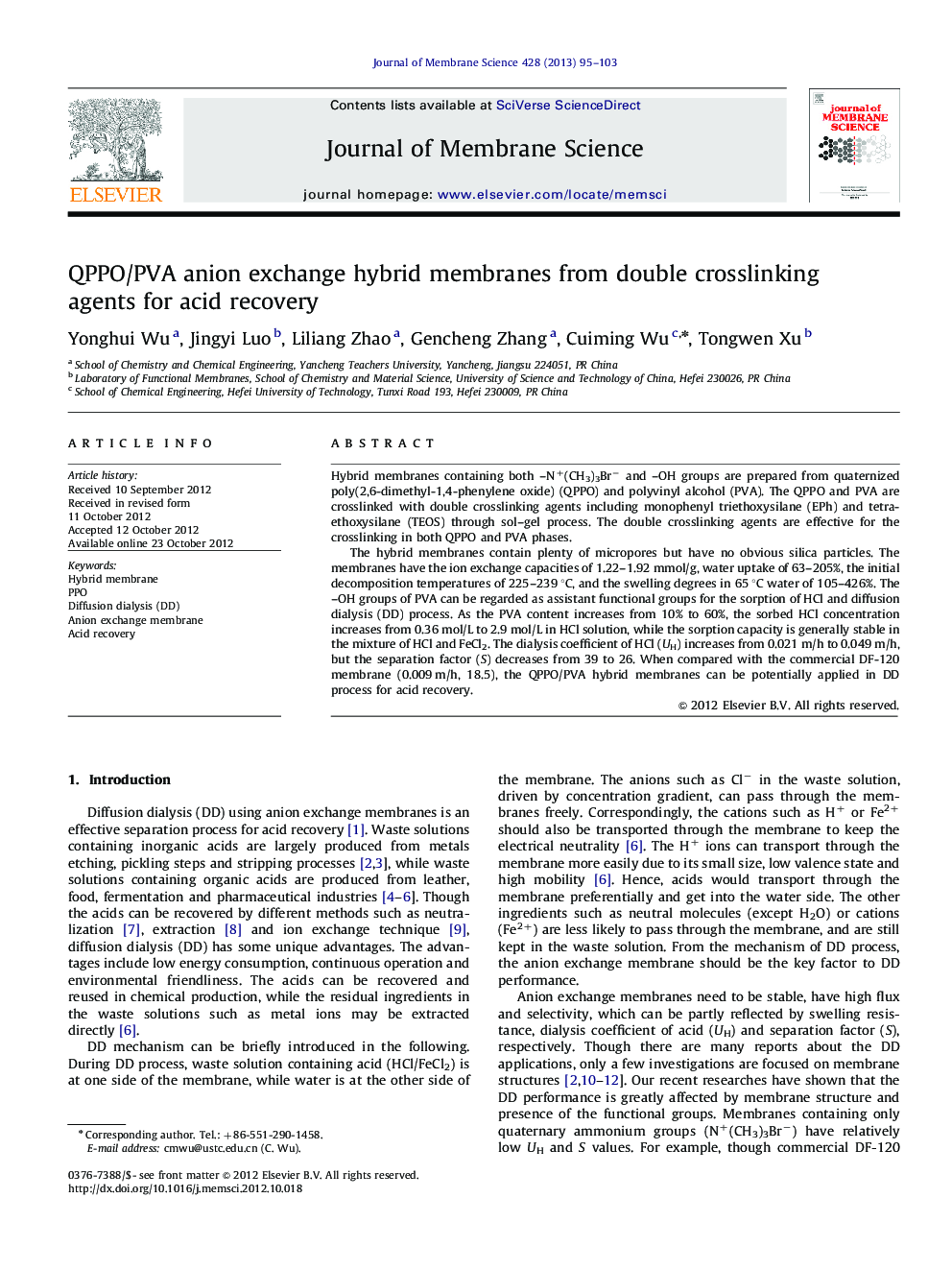| Article ID | Journal | Published Year | Pages | File Type |
|---|---|---|---|---|
| 634599 | Journal of Membrane Science | 2013 | 9 Pages |
Hybrid membranes containing both –N+(CH3)3Br− and –OH groups are prepared from quaternized poly(2,6-dimethyl-1,4-phenylene oxide) (QPPO) and polyvinyl alcohol (PVA). The QPPO and PVA are crosslinked with double crosslinking agents including monophenyl triethoxysilane (EPh) and tetraethoxysilane (TEOS) through sol–gel process. The double crosslinking agents are effective for the crosslinking in both QPPO and PVA phases.The hybrid membranes contain plenty of micropores but have no obvious silica particles. The membranes have the ion exchange capacities of 1.22–1.92 mmol/g, water uptake of 63–205%, the initial decomposition temperatures of 225–239 °C, and the swelling degrees in 65 °C water of 105–426%. The –OH groups of PVA can be regarded as assistant functional groups for the sorption of HCl and diffusion dialysis (DD) process. As the PVA content increases from 10% to 60%, the sorbed HCl concentration increases from 0.36 mol/L to 2.9 mol/L in HCl solution, while the sorption capacity is generally stable in the mixture of HCl and FeCl2. The dialysis coefficient of HCl (UH) increases from 0.021 m/h to 0.049 m/h, but the separation factor (S) decreases from 39 to 26. When compared with the commercial DF-120 membrane (0.009 m/h, 18.5), the QPPO/PVA hybrid membranes can be potentially applied in DD process for acid recovery.
► Anion exchange hybrid membranes from double crosslinking agents are prepared. ► The double crosslinking agents are effective for the membrane stability. ► The –OH groups can be regarded as assistant functional groups for DD process. ► The UH (flux) is 2–5 times higher than that of commercial DF-120 membrane. ► The selectivity is about 1.5–2 times higher than that of DF-120 membrane.
